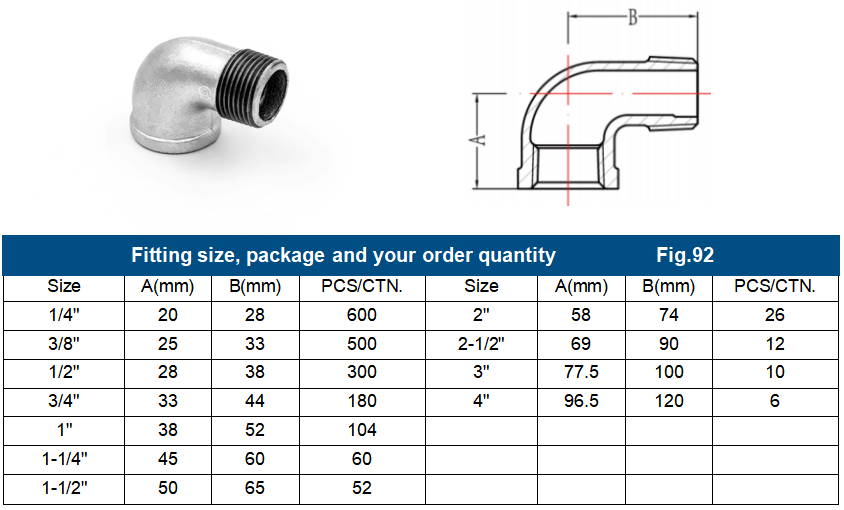Why choose cast iron fittings?
Cast iron is both reliable and durable, making it the best choice for use in commercial buildings. Cast Iron Pipe Fittings
Cast iron pipe and fittings have been the backbone of drainage, drainage and ventilation piping systems around the world for centuries.
While plastic meets minimum building standards in many cases, what meets code and what represents the best solution for high-performance commercial construction are two very different issues.
Many times, the cost advantages of plastics over cast iron are not what they appear to be. Before allowing a job to be converted to PVC or ABS, consider five areas that may add cost and complexity.
Fireproof construction
Underground installations
Above-ground installations
Sound attenuation
Importance of manufacturing standards
Cast Iron Types
Cast iron soil pipe and fittings fall into two main types - hub and socket and hubless. Hubless pipes and fittings are also referred to as hubless in the plumbing industry.
Hubless cast iron soil pipe and fittings are manufactured without hubs in accordance with CISPI 301. The method of connecting pipe and fittings uses a metal shielded hubless coupling manufactured in accordance with CISPI 310 that expands and contracts on the flat end of the pipe and fitting and is twisted to seal the joint.
Hubless cast iron soil pipe and fittings are manufactured in one category only, with wall thicknesses varying by size. Many different fitting configurations are available, with pipe and fitting sizes ranging from 1 1/2" to 15". Metal shielded couplings for connecting hubless pipes and fittings are also available in these size ranges from member companies of the Cast Iron Soil Pipe Institute.
Hub and Socket Pipes and fittings have a socket (flat end) into which the pipe or fitting is inserted for the hub. The joints are sealed with thermoset elastomeric gaskets or lead and oak.
Hub and Socket Tubes and Fittings are available in two grades or thicknesses, Service (SV) and Extra Heavy Duty (XH). Additional wall thickness is added to the outside diameter of the Extra Heavy Duty (XH), so Extra Heavy Duty (XH) and Service (SV) are not easily interchangeable.
Hub and socket tubes and fittings are manufactured in accordance with ASTM A-74 and are available in sizes 2"-15". Thermoset elastomeric gaskets, lubricants and assembly tools are available from member companies of the Cast Iron Soil Pipe Institute
Uses Of Cast Iron Soil Pipe
Cast iron soil pipe and fittings are used primarily in building construction for sanitary and storm drain, waste, and vent piping applications. The product is installed in residential construction, hospitals, schools, and commercial and industrial structures. For this reason, the pattern of cast iron soil pipe shipments and sales is directly related to the pattern of building activity.
In buildings, the principal assembly of this piping is installed within the partitions and serves the tub, lavatory, and water closet fixtures. The main line in this assembly is the cast iron soil stack, which runs vertically from the building drain up through the structure and through the roof. Waste lines are connected to this main soil stack, and vent lines may also be tied in at a point above the highest fixture. In some installations vent lines are connected to a separate vent stack, which acts as the main source of air to and from the roof.
The building or house drain, the lowest horizontal piping in the drainage system, receives the discharge from the soil, waste, and drainage pipes from within the building and conveys the discharge to the building sewer. The building or house sewer, in turn, conveys the discharge outside of the structure, to the point prescribed by the local plumbing code for joining of the city sewer, septic tank or other means of disposal.
Another use for cast iron soil pipe and fittings in building construction is for storm drainage from roofs, yards, areaways and courts. It is used for collecting subsoil drains, which are placed around the foundation for connection into a storm drainage system, or into a sump. It is also used for roof leaders, particularly when these are placed within the building, pipe space, or other area. Extensive use is made of soil pipe for storm drainage on high-rise buildings where large setbacks accumulate substantial amounts of rainwater and snow. At present, cast iron soil pipe is used in high rise building construction for drain, waste, vent, and sewer purposes without concern for building height and is, in fact, the preferred material. There are large numbers of uses for cast iron soil pipe other than in building construction.



评论
发表评论